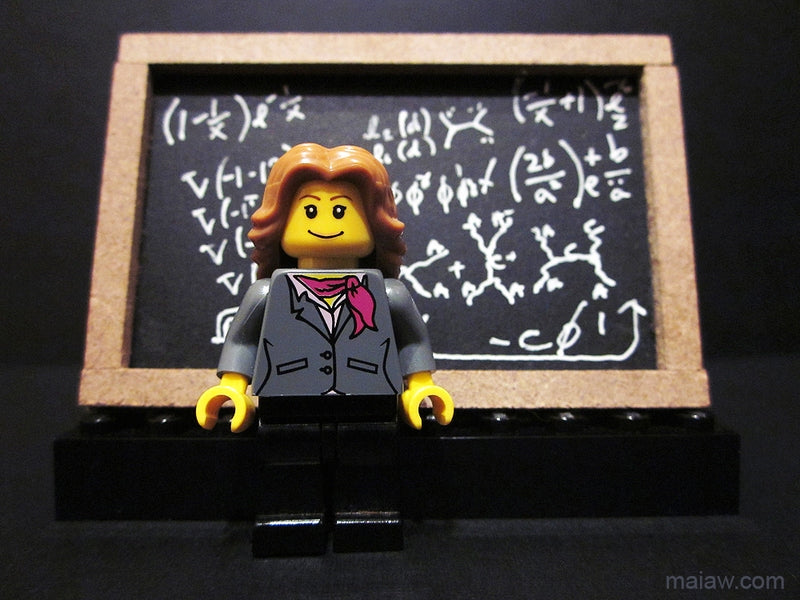Welcome back to the Flybrix “Learn More About” series! Each blog, we’ll explore another aspect of flight, science, or technology and learn more about it. This time, we’re learning more about physics.

What Is Physics?
Physics is the study of the world (and universe) around us, and the theories that explain how it all works. Everything from gravity, heat, motion, electricity, and even the stars above can all be better understood through physics. What we know today as physics began as “natural philosophy” in the ancient world, used by people like the great Greek philosopher Aristotle as an attempt to explain the workings of nature.
Classical Physics vs. Modern Physics
Much like other sciences, engineering (as an example), physics comprises several different areas, or branches. The most common branches of physics can be grouped into two categories: classical physics and modern physics. Classical physics deals largely with concepts that were explored prior to the 20th century, while modern physics deals with ideas that were developed primarily within the past 100 years.
Branches of Classical Physics
You’re already familiar with the different types of classical physics -- because you experience many of their principles firsthand every day. Take classical mechanics. It’s rooted in Sir Issac Newton’s laws of motion and gravity, published in 1687. Among other principles, these laws state that an object moves as the result of a force acting upon it. For example, when you move a glass across the dinner table, you are “the force” acting on the glass. Newton also used his principles to explain Johannes Kepler’s laws of planetary motion, which, along with the earlier work of Copernicus and Galileo would prove that the earth revolves around the sun.

Two more types of classical physics you’ll definitely recognize are optics and acoustics, the science behind how we see and hear. Some of the most significant developments in optics, the study of light, were made by Islamic scientists like Ibn al-Haytham, who shortly after the first millennium published his Book of Optics. al-Haytham supported a theory of vision where light enters the eye to produce sight, opposed to the Ancient Greek theory where light beams emanating from the eyes shone onto objects and rendered them visible. This paved the way for more informed studies of lenses, mirrors, and the properties of light itself. Like optics, experiments in acoustics originated in Ancient Greece, continued through the centuries, and gave rise to modern technology like microphones, speakers, and ultrasound machines.
These last two examples of classical physics have the ability to power some familiar machines. Thermodynamics is the study of how thermal energy can be transformed into different types of energy. The most recognizable application of thermodynamics is steam locomotives, in which the steam produced by the burning of coal is used to drive the pistons that make the wheels of a train go. Electromagnetism is the study of electricity and magnetism, which are actually the results of the same natural force. You can see this idea at work when you coil an electric wire around a piece of iron to make an electromagnet, as the flow of electricity through the wire generates a magnetic field. Electromagnets can be found in all sorts of things, from speakers to computers to power generators.
Examples of Modern Physics
Classical physics is fine for explaining the “normal” everyday world around us, but when dealing with things traveling at high speed or that are very, very small (or very, very large), its principles don’t always hold up. Modern physics, particularly quantum mechanics, helps to pick up the slack, so to speak, when classical physics fails. Quantum mechanics explains how things work on the subatomic level -- opposed to classical mechanics, which helps to explain how things of everyday size act and react. Remember our example earlier, where we used classical mechanics to understand how when you apply a force to a glass it moves across the table? Quantum mechanics helps us understand how the protons, electrons and other particles inside the glass behave.
Conversely, two other significant examples of modern physics help explain how things work on the large scale of the universe: special relativity and general relativity, developed by the great Albert Einstein. These come into play when dealing with things that have strong a gravitational pull, like a star. Special relatively establishes that the speed of light in a vacuum such as outer space is constant no matter your vantage point, and that space and time are intertwined -- referred to jointly as spacetime. It also gave rise to Einstein’s famous equation E=mc2 which holds that energy is equivalent to an object’s mass multiplied by the speed of light squared.
The second concept, general relativity, is more or less an updated theory of gravity. It explains that the force we know as gravity is actually due to curves in spacetime caused by massive bodies. Imagine the sun as a tennis ball suspended on a long sheet of paper, representing spacetime. The mass of the ball causes a curve in the center of the paper. If you place a golf ball on the outer edge of the paper, the curve in the paper will cause the golf ball to roll toward the tennis ball at the center -- much like an unlucky astronaut would be “pulled” in by a star. These ideas were revolutionary when Einstein first published them at the beginning of the 20th century, and paved the way for further breakthroughs in the world of modern physics.

The Physics of Flying
Aerodynamics is a type of classical physics concerned specifically with flying, and comes into play when building and operating your Flybrix drone kits. Like we explained in our earlier Learn More About blog on propellers, forces like lift (what makes a plane rise off the ground) and thrust (what makes a plane move forward through the air) are essential to flying. These forces work to overcome two opposite forces -- weight and drag. So, you may not realize it, but when you take to the skies with Flybrix, you’re standing on the shoulders of physics greats who worked tirelessly to unlock how the world works.
Is there something you’d like to Learn More About? Contact us on Facebook and let us know! And be sure to experience some propeller magic for yourself with Flybrix kits.

